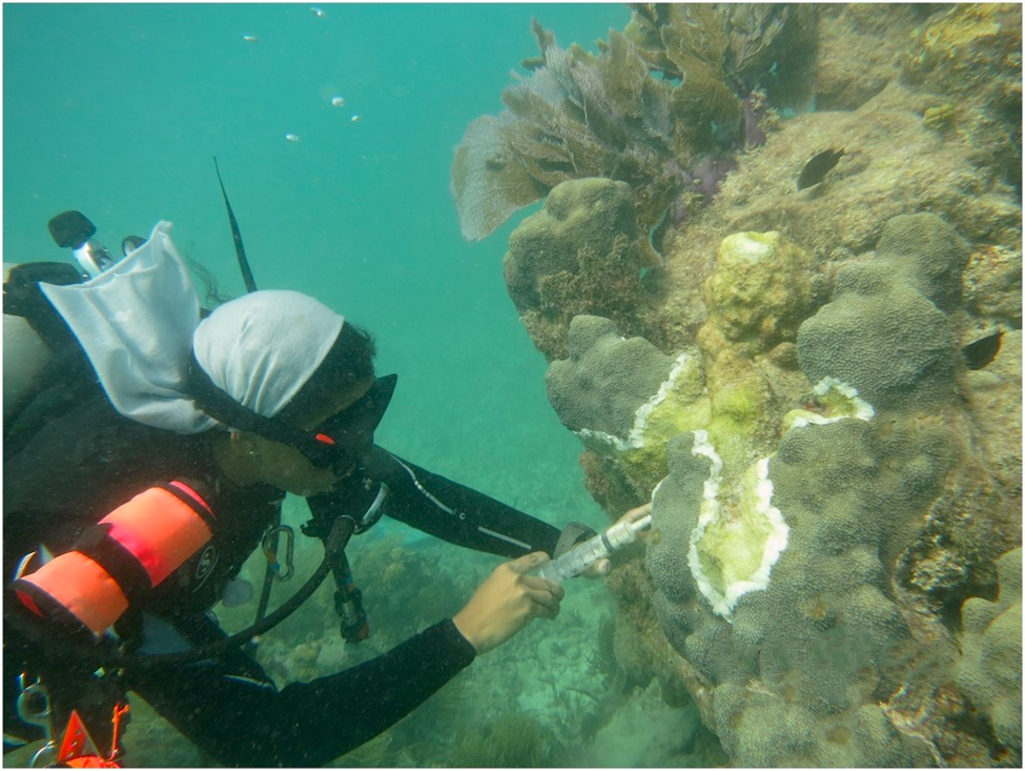
Biscayne National Park staff have been combatting coral diseases/NPS file
More than $1.1 million will be used at Biscayne National Park in Florida in a bid to protect coral reefs from disease and climate-change impacts, and to restore reefs in the park.
Coral reefs in recent years have been hit with a double-whammy, suffering from the spread of stony coral disease as well as coral bleaching events tied to unusually warm sea waters. Stony coral disease is an infectious, water-borne disease that impacts hard coral species and damages entire reefs. Bleaching is the result of warmer-than-usual water temperatures killing off the corals' resident microbial organisms.
Live coral cover across Interior Region 2 (IR2) parks, including Biscayne, has declined by as much as 90 percent during the last 30 years, according to the National Park Service. Park reefs provide habitat essential for commercially and recreationally important species, offer shoreline protection, and contribute heavily to the tourism economy. Loss of live coral leads to reduction in the reef ecosystem’s ability to provide these critical ecosystem services.
The park will use this funding to implement the region-wide coral reef resource stewardship strategy (RSS) to increase protection and management of park reefs. Funded actions aim to increase overall coral ecosystem health and resilience to climate change and other environmental concerns. These projects infuse much-needed funding in putting people to work in addressing critical ecosystem needs to restore healthy and resilient park lands while benefiting communities surrounding parks, the park noted in a news release.
“We are excited to receive this funding, which will help the park continue focusing on coral disease intervention, coral population enhancement, maintenance and expansion of the park’s mooring buoy network, restoration of storm damaged corals, removal of marine debris from park reefs, and management of invasive species," said Biscayne Superintendent Penelope Del Bene. "By increasing the health of park resources, we are not only able to work on critical environmental issues, but also support meaningful visitor experiences.”
The $1.1 million endeavor is part of an overall $195 million investment in the National Park System over the next ten years from the Inflation Reduction Act to prepare parks across the country to be resilient to climate change. These investments are incredibly timely, as healthy ecosystems, wildlife and native plant habitats, and cultural resources are threatened by climate change and many other environmental challenges, the Park Service pointed out.



Add comment